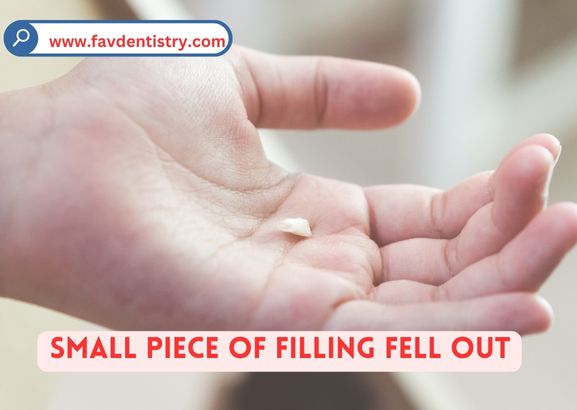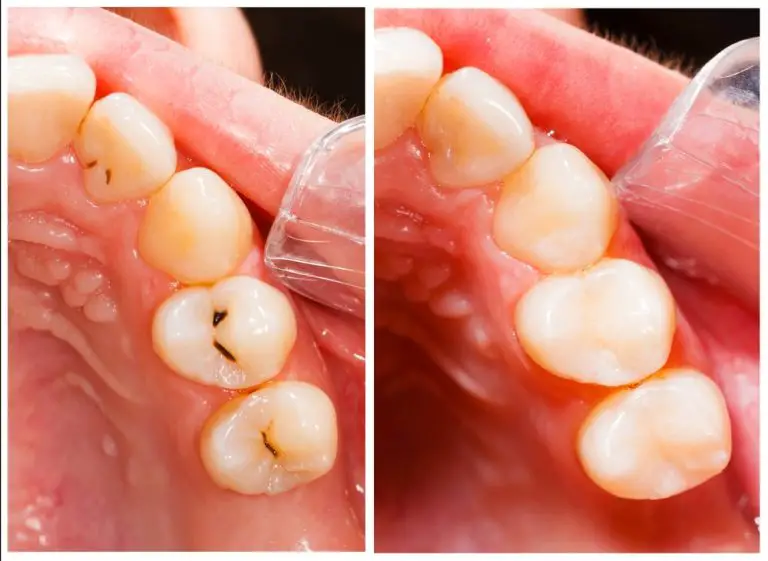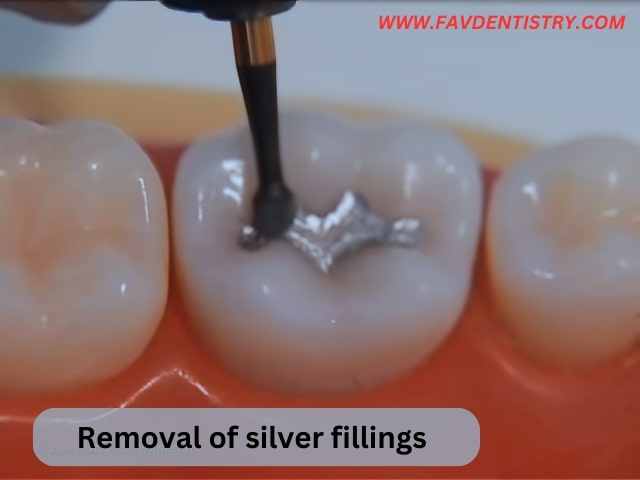Last Updated on 3 weeks by Dr. Michelle G. Brito
As a dentist, I often encounter patients grappling with the decision of choosing the right dental filling for their teeth. This comprehensive guide aims to shed light on the various types of dental fillings available, helping you make an informed decision based on your unique needs.
Understanding Which Filling is Best for Teeth?
Amalgam Fillings:
Pros:
-
-
Durable and long-lasting.
-
Cost-effective.
-
Ideal for restoring molars and teeth subjected to heavy chewing.
-
Cons:
-
-
-
Silver appearance may be less aesthetically pleasing.
-
-
Composite Fillings:
Pros:
-
-
Natural tooth color for a seamless blend.
-
Bonds directly to the tooth structure.
-
Versatile use, suitable for both front and back teeth.
-
Cons:
-
- Slightly less durable than amalgam fillings, particularly for large restorations.
ceramic Fillings:
Pros:
- Highly aesthetic, and closely mimics natural tooth color.
- Resistant to staining.
- Durable and long-lasting.
Cons:
- More expensive compared to other options.
Glass Ionomer Fillings:
Pros:
-
- Releases fluoride, aiding in cavity prevention.
- Suitable for small restorations.
- Often used in pediatric dentistry.
Cons:
-
- Less durable than amalgam or composite fillings.
Factors to Consider:
Aesthetics:
If appearance is a primary concern, composite or ceramic fillings may be the preferred choice due to their natural-looking characteristics.
Durability:
For molars and teeth exposed to heavy chewing, amalgam or ceramic fillings may offer superior durability.
Budget:
Amalgam fillings are generally more cost-effective, making them a practical choice for those on a budget.
Preventive Properties:
Glass ionomer fillings release fluoride, providing an added layer of protection against future decay.
Making the Decision Which Filling is Best for Teeth:
The ideal filling for your teeth depends on various factors, including the location of the tooth, aesthetic preferences, and your budget. Consulting with your dentist is crucial for a personalized recommendation based on your oral health needs and individual circumstances.
Which Filling is the Strongest?
There are many factors to consider when choosing a dental filling, including the type of material, the size and location of the cavity, and your budget. But which filling is the strongest? Surprisingly, there is no accurate answer.
The strength of a dental filling depends on many variables, including the type of material used, the size and location of the cavity, and your bite. Let’s start with the basics: there are two types of dental fillings: direct and indirect. Direct fillings are made from materials that harden quickly, such as amalgam (silver) or composite (tooth-colored).
Indirect fillings are made from materials that need to be set in a laboratory before being placed in your mouth, such as porcelain or gold.
Amalgam fillings are the most vital type of direct filling because they can withstand more force than composite fillings. However, composite fillings can bond to tooth structure better than amalgam fillings, making them as strong or even more vital in some cases. As for indirect fillings, both porcelain and gold are solid materials.
Porcelain is often used for cosmetic purposes because it closely resembles natural tooth enamel. Gold is also a very durable material but is less popular due to its high cost. Ultimately, the strength of a dental filling comes down to more than just the type of material used.
The size and location of the cavity also play a role in determining how strong a filling needs to be. For example, small cavities located near the back teeth don’t experience as much force as larger cavities located in the front teeth do. As a result, small back cavities can often be filled with weaker materials like resin composites, while larger front cavities require more robust materials like amalgams or gold alloy Fillings.
What are the 4 Types of Fillings?
The four types of fillings are amalgam, composite, inlay, and onlay. Amalgam is a silver-colored alloy made of mercury, silver, tin, and copper. It has been used for over 150 years and is still considered one of the most durable types of fillings.
Amalgam is also the least expensive type of filling. Composite fillings are made of a resin material that can be matched to the color of your tooth. They are less visible than amalgam fillings and can be used on either front or back teeth.
Composite fillings are less durable than amalgam but usually last several years with proper care. Inlays and onlays are also made from resin, but they are custom-made in a laboratory to fit your tooth exactly. Inlays fit inside the cusp (top) of the tooth, while onlays cover one or more cusps.
Inlays and Onlays can also be matched to the color of your tooth and look very natural. Still, they usually cost more than composite or amalgam fillings because they require two dental visits – one to prepare the tooth and take an impression and another visit to place the inlay or onlay once it has been made in the lab. Which type of filling is best for you depends on several factors, including where the filling is needed, how large the area that needs to be filled is, your budget, and your preference for appearance.
Which Filling Is Long Lasting?
There are many factors to consider when choosing a dental filling, including the type of material, the size and location of the cavity, and your personal preference. Some people prefer metal fillings because they are durable and long-lasting. Others prefer tooth-colored composite fillings because they are less visible.
Ultimately, the best filling for you is one that meets your needs and preferences.
Best Permanent Tooth Filling at Home
There are many types of tooth fillings that people can choose from these days. However, when it comes to selecting the best kind of tooth filling, there are only two main types that people choose: amalgam and composite. Both types of tooth fillings have their own set of pros and cons, so it’s really up to the individual to decide which one is right for them.
They have been used for over 150 years and are still considered to be one of the most popular types of tooth fillings available today. One of the most significant advantages of amalgam fillings is that they are solid and durable, so they can last for many years before needing to be replaced. They are also relatively inexpensive compared to other types of tooth fillings.
However, there are also some disadvantages associated with amalgam fillings. One concern is that the mercury in amalgam fillings could potentially be harmful if it leaks out into your body. There is also some evidence that suggests that amalgam fillings could expand over time and put pressure on your teeth, which could eventually lead to cracks or fractures.
And because they are made from metals, amalgam fillings are not as natural-looking as composite fillings and can stand out quite noticeably in your mouth. If you’re considering getting an amalgam filling, be sure to discuss all the risks and benefits with your dentist first. Composite Fillings
Types of Dental Fillings And Costs
There are many types of dental fillings available to patients today, each with its advantages and disadvantages. The filling you receive will be based on the recommendations of your dentist, taking into account the size, location, and severity of your tooth decay.
Amalgam Fillings: Amalgam fillings are made from a mixture of metals, including silver, tin, copper, and mercury. They have been used for over 150 years and are still one of the most popular choices among dentists due to their durability and low cost. However, amalgam fillings are also noticeable and can cause allergic reactions in some people.
Composite Fillings: Composite fillings are made from a mix of plastic and glass particles that mimic the color of your natural teeth. They are less noticeable than amalgam fillings but may need to be more durable and long-lasting. Composite fillings typically cost more than amalgam fillings but can be worth the investment if you’re concerned about aesthetics.
Glass Ionomer Fillings: Glass ionomer fillings release fluoride ions that help prevent tooth decay. They bond well to teeth, so they can be used in areas that experience a lot of stress (such as chewing surfaces). Glass ionomer fillings typically last 3-5 years before needing to be replaced.
Permanent Tooth Filling Material
While there are many different types of tooth-filling materials available on the market today, not all of them are created equal. When it comes to choosing a material for your permanent tooth filling, you want to make sure that you choose something safe and durable that will last for many years to come. One material that meets all of these criteria is composite resin.
Composite resin is made from a mixture of plastic and glass particles. It is solid and can withstand the forces of biting and chewing without breaking down over time. In addition, the composite resin is also very resistant to staining and discoloration, so it will continue to look great for years to come.
Best of all, composite resin is a biocompatible material, which means it is safe for your body and won’t cause any allergic reactions or other problems. If you are looking for a permanent tooth-filling material that meets all of these criteria, then composite resin may be the right choice for you. Talk to your dentist about whether or not this material would be suitable for your specific needs.
New Dental Filling Material
A new dental filling material has been developed that is said to be much stronger and more durable than the current materials used. The new material, known as zirconia, is a white powder that is made from zirconium oxide. It is said to be three times more potent than the current tooth-colored fillings and can last up to 15 years with proper care.
Zirconia is also said to be more resistant to staining and discoloration than the current materials used for dental fillings.
Tooth Filling Cost
Tooth filling costs can vary depending on the severity of the tooth decay and the size of the cavity. In general, the tooth filling cost for a minor cavity can range from $50 to $150. For a medium-sized cavity, the tooth filling cost can vary from $100 to $300.
For a large cavity, the tooth filling cost can be upwards of $500. The type of tooth-filling material used will also affect the overall tooth-filling cost. Amalgam fillings are typically less expensive than composite fillings; however, they are also less aesthetically pleasing.
If you are interested in getting a natural-looking smile, then you may want to do more for a composite tooth filling.
Composite Filling
Composite fillings are a type of dental filling made from a mixture of resins and fine particles of glass. They are used to restore teeth that have been damaged by decay or wear and tear. Composite fillings are also used to improve the appearance of teeth by changing their color or shape.
They can also be shaped to blend in with your tooth’s natural contours. If you’re considering having a composite filling, it’s important to discuss all your options with your dentist so that you can make an informed decision about what’s best for you and your smile!
Dental Filling Material Composite
Composite fillings are a type of dental filling made from a mixture of plastic and glass. Composite fillings are usually white, which makes them less visible than silver amalgam fillings.
The plastic is usually a resin, while the glass is typically quartz or silica. The two materials are combined in different proportions to create a material that is strong and durable enough to withstand the forces exerted on teeth during chewing.
The advantages of composite fillings include their esthetic appeal and their ability to bond to the tooth structure. This bonding helps to seal out food and bacteria that can cause decay beneath the filling. Composite fillings can also be used to repair cracked or chipped teeth.
The disadvantages of composite fillings include their higher cost compared to silver amalgam fillings, as well as the fact that they require more time and effort to place than amalgam fillings.
FAQs about Which Dental Fillings Is Best?
How do I know if I need a dental filling?
If you experience tooth sensitivity, pain, or notice discoloration, it’s essential to consult your dentist for an examination. Early detection helps in determining whether a filling is necessary.
Are all dental fillings noticeable?
No, not all fillings are noticeable. Composite and ceramic fillings closely match the natural tooth color, making them virtually indistinguishable from the surrounding teeth.
Are amalgam fillings safe?
Yes, amalgam fillings are considered safe for most people. The small amount of mercury in amalgam is bound with other metals, creating a stable compound. Extensive research supports their safety and efficacy.
How long do dental fillings last?
The lifespan of a filling depends on various factors, including the type of filling, its location, and oral hygiene. Generally, amalgam fillings can last 10-15 years, while composite and ceramic fillings may need replacement every 5-10 years.
Can I eat normally after getting a dental filling?
Yes, you can resume normal eating once the anesthesia wears off. However, it’s advisable to avoid extremely hot or cold foods for a short period, especially if you received a composite filling.
Conclusion
Choosing the best filling for your teeth is a collaborative decision between you and your dentist. Understanding the unique features of each type of filling empowers you to make an informed choice that aligns with your oral health goals. Remember, regular dental check-ups are essential for early detection and timely intervention. If you have questions or concerns, don’t hesitate to discuss them with your dental professional for personalized advice tailored to your unique situation.






